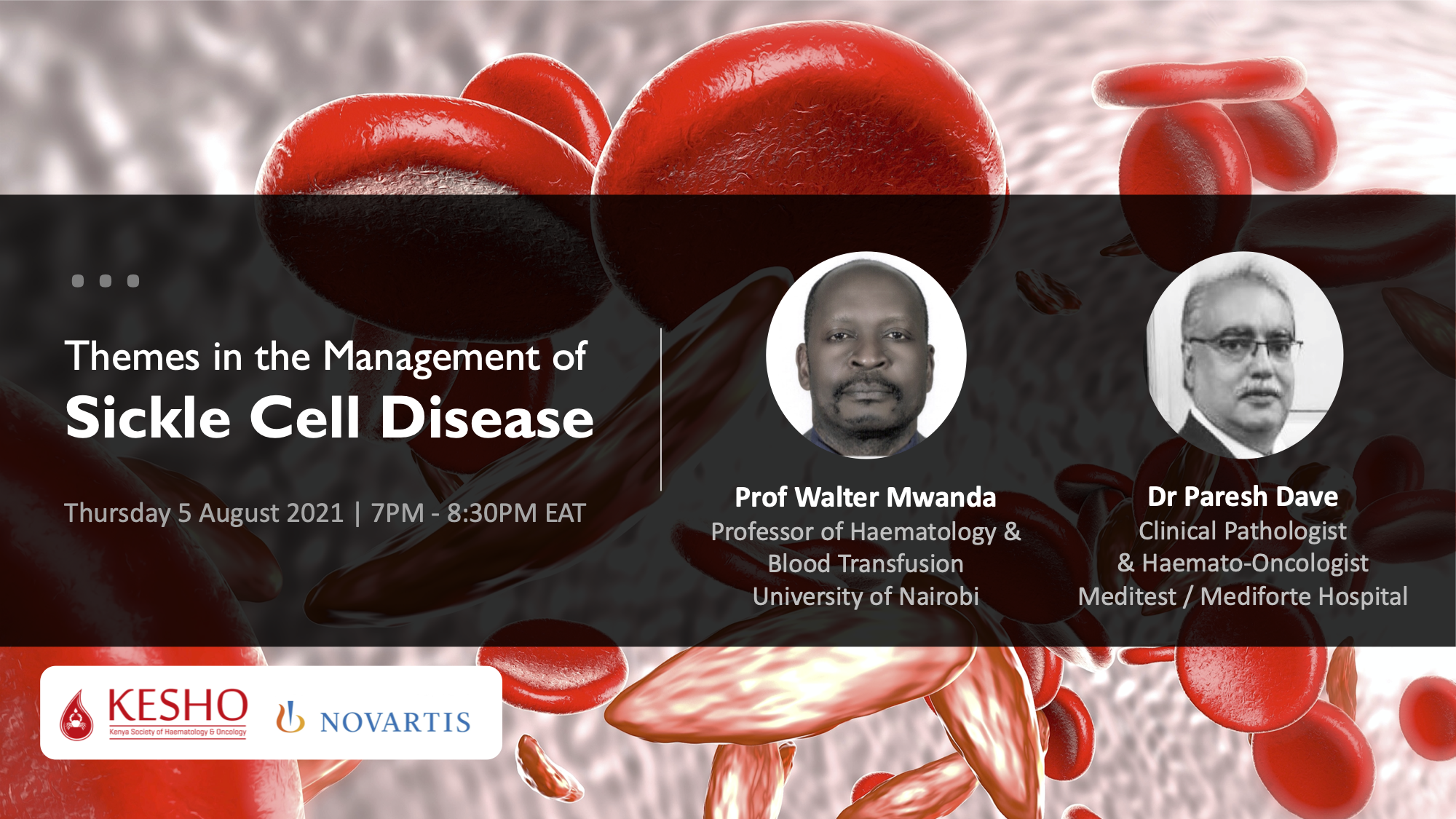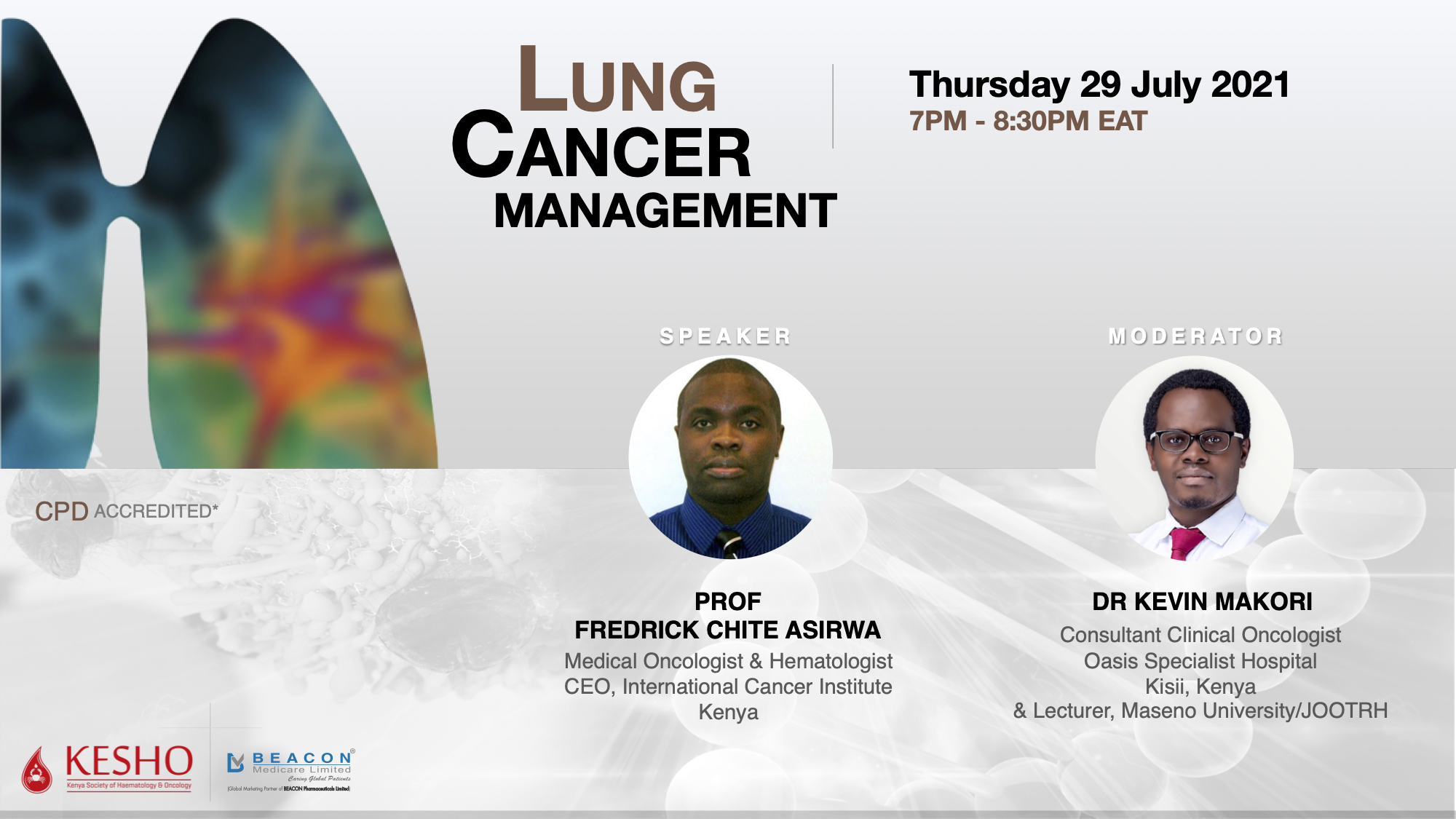
- This event has passed.
Themes in the Management of Sickle Cell Disease
Event Navigation

Moderator: Dr. Paresh Dave, Clinical Pathologist, and Haemato-Oncologist, Medirest/
Sponsor: Novartis
Presenters:
- Prof. Walter Mwanda, professor of Hematology and blood transfusion, University of Nairobi
Sickle cell disease (SCD) results from glutamine to valine substitution in the beta-globin gene that produces hemoglobin S (HbS). Pathophysiology manifests a complex network of interdependent processes. The patients have a lower life expectancy, with the majority in Kenya being below 12 years old. Less than 5% of SCD patients in Kenya are older than 25 years. The disease is characterized by dense, rigid red blood cells that are easily trapped within organs and have a sluggish microcirculation. Haemolysis is a common manifestation in acute and chronic states. The HbS polymerizes when exposed to reduced oxygenation. This causes deformation and damage to the red blood cells (RBCs) membrane, resulting in intravascular and extravascular hemolysis. The sickle RBCs block blood flow in capillaries and small vessels, causing acute pain in the patients. The immediate effects of hemolysis include loss of RBC which causes anemia, increased levels of toxic heme from the released hemoglobin, which depletes plasma haptoglobin and hemopexin, and saturates scavenger heme-binding proteins. Heme within the vessel interacts with inflammatory cells and the endothelium, damaging it. Anemia is a common manifestation in SCD and may be acute or chronic. Patients with SCD are immune-compromised and should be protected from infections. For example, vaccination together with the use of prophylactic penicillin has greatly reduced mortality and improved life expectancy in children with SCD. Vaso-occlusion is common among patients seeking treatment and is associated with adhesion of the sickle cells, coagulation of platelets, and activation of inflammatory cells. Hypercoagulable state of sickle cell anaemia adds to vascular occlusion. Hypercoagulation results from increased levels of thrombin and fibrin, and a marked increase in circulating tissue factor in the endothelial cells. Blood transfusion is known to worsen coagulation. Acute and chronic forms of organ injury. may occur. The prompt identification of a sickle cell event and timely therapeutic intervention are important prognostic factors, and delays could be life-threatening. Acute complications include acute chest syndrome, cerebral acute events, priapisms, while chronic complications include pulmonary hypertension, hepatic damage, kidney disease, splenomegaly, bone joint diseases, eye disease, and leg ulcers. Treatment is by use of hydroxyurea, bone marrow transplantation, and blood transfusion. However, transfusion therapy results in long-term iron overload complications. This is managed by the use of iron chelator drugs, including deferoxamine and Asunra, especially for patients on long-term blood transfusion. Various clinical trials on lentiviral gene therapy in SCD are ongoing. Gene editing by CRISPR/Cas9 to correct the beta-globin gene in hematopoietic stem cells is also undertrials

